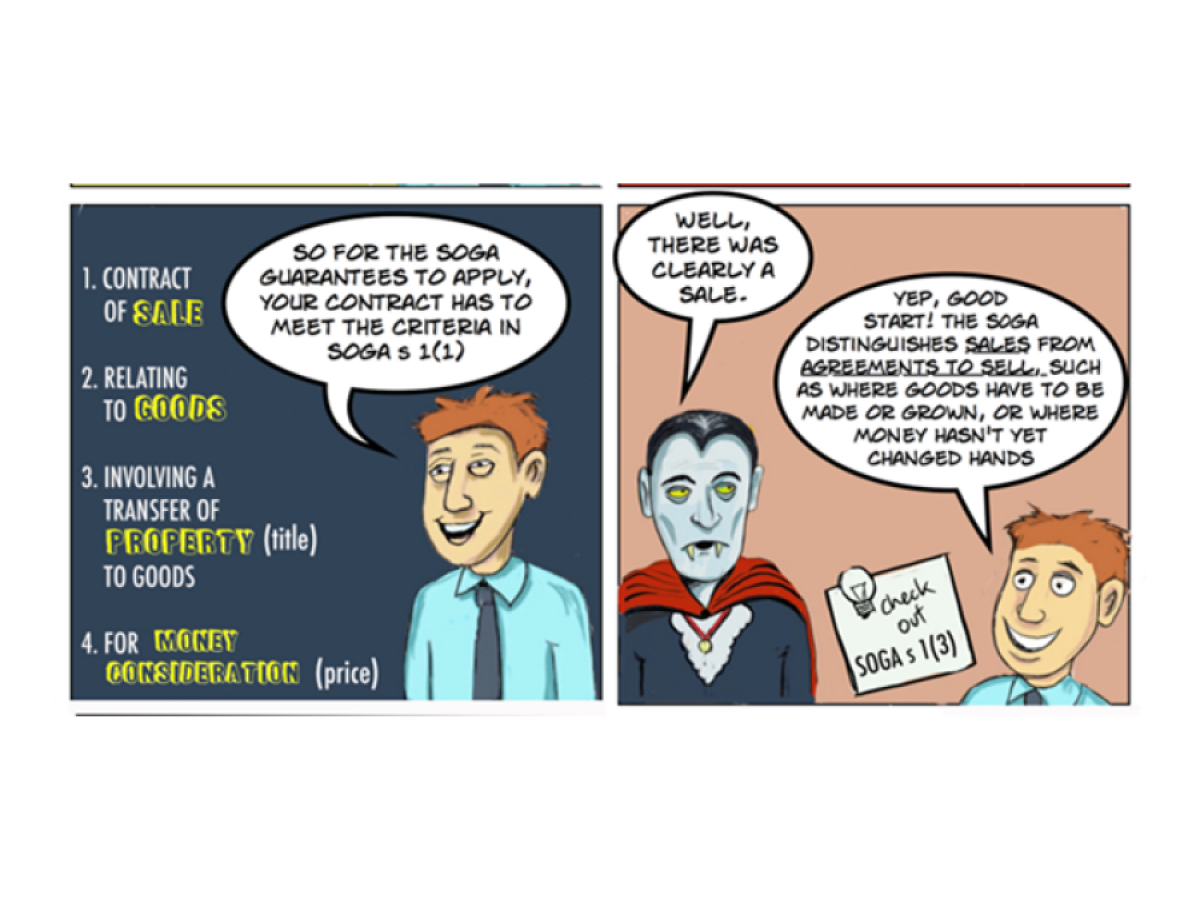Using Visualisation to teach complex concepts
Creative approaches are needed to address the challenge of learning complex concepts. David Brown and Mark Giancaspro explain how they use comics to maximise engagement and student success.
Complex topics in a range of disciplines can be very difficult to explain using traditional teaching methods. Even when greatly simplified, words alone frequently fail to assist students’ understanding of the concepts.
The challenge is increased for students whose reading or academic literacy skills are underdeveloped or for students with English as an additional language.
The legal, insurance and banking sectors among others have also identified the need to actively find ways to make legal concepts, for example, easier for lay people to comprehend.
Using visualisation to explain complex concepts
Visualisation and storytelling techniques such as comics provide a novel way to solve this problem. Research is beginning to suggest that explaining legal principles through imagery and running narratives is a more engaging and memorable technique compared to traditional textual and auditory methods.
We created a series of comic books to explain and simplify complex legal principles in core Law and non-Law tertiary programs. This supplementary learning tool incorporates innovative visualisation and narrative techniques scientifically proven to enhance the student learning experience. Our students enjoyed the novelty of reading comics to support their learning as well as improve their academic performance. We surveyed our students over the 2 years of using this approach and 89% reported that the comics had significantly improved their understanding of the target legal concepts.
Importantly, this resource is supplementary to traditional teaching methods and materials such as lectures, prescribed readings, and presentation slides. This ensures that your teaching is catering for diversity by enabling all learners to engage with the concepts through multiple means.
How to use and adapt this technique
If your course covers difficult topics this approach has enormous potential to create a more effective and inclusive learning experience. The visualisation can be developed using a relatively simple method.
- Generate a rough storyline and characters to form the basis of the comic.
- Consider ways to thread the topic principles into the storyline and character narratives.
- Either write a ‘script’ of dialogue between the characters or attempt to ‘storyboard’ the comic with panels indicating each fragment of the story (as with traditional comic books).
- Find someone who can draw! We engaged a professional to generate refined versions of our scripts and storyboards. Alternatively, contact Learning Enhancement and Innovation to discuss how technology could enable this approach.
- Review for flow, accuracy, interest, and length. Edit as required.
- Finalise comics and promote as supplementary learning resource within your course.
You don’t need not be overly creative or a good artist to come up with a draft comic idea. You can apply the same thinking process that you use for coming up with scenarios for problem-based questions. The difference is that you are now attempting to create a visual version. Pictures can replace many of the words that would have been needed to explain the scenario.
In our case, each storyboarded comic book took approximately 15-20 hours for the cartoonist/artist to create. The scripts, on the other hand, took approximately double the amount of time to create and cost proportionately more given the cartoonist/artist had to generate the storyboards themselves.
The average industry rate for cartoonists or graphic artists specialising in this kind of work is $40 per hour. For a 14-page full colour comic book consisting of approximately 6 panels per page, we paid around $700-$800 for storyboarded comics and $1400-$1500 for scripted comics.

Example snippets from our sale of goods and secured transactions comics
Additional tips to improve the efficacy of your comics
Students told us the following features of our comics made them successful in achieving our goal.
- Simple, easy to follow storylines which strategically incorporated legal terms and principles
- Frequent use of humour
- Occasional inclusion of novel but unrelated facts which relate to the character dialogue
- Vibrant colour schemes
- Realistic scenarios that might plausibly arise in practice but which were distinct from one another
It is little wonder that the legal industry is starting to experiment with visualisation, particularly converting traditional text-based contracts to picture-based contracts. This technique has enormous potential in the tertiary education space.
Our resource proved to be a successful supplementary learning tool, and we are now in the process of making more. We strongly encourage you to consider trialling this technique. It might just be the difference for students grappling with complex legal principles.
Story from Associate Professor David Brown and Dr Mark Giancaspro, Adelaide Law School
This article has also been published on THE Campus website. Contact the Teaching Excellence team if you would like to discuss sharing your learning and teaching ideas through this channel.
